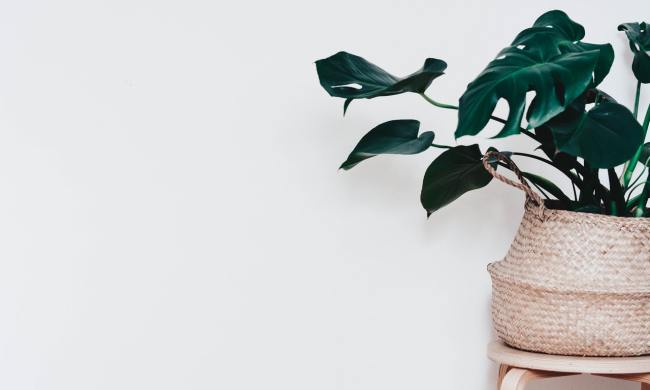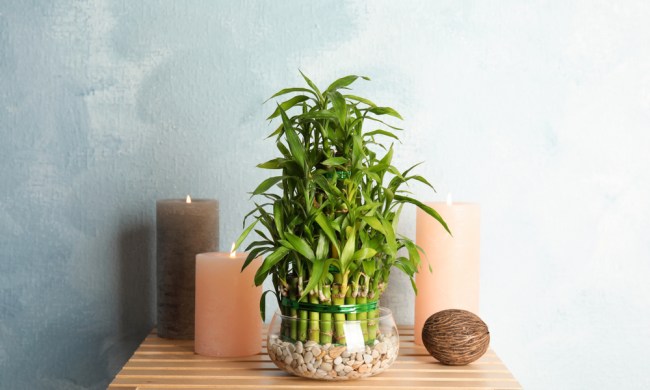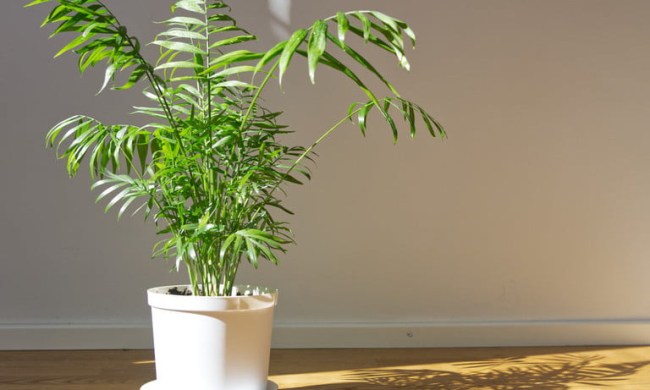
Houseplants are a great addition to any living area. Not only are they decorative, but they also bring life to the space. Studies have shown that houseplants can boost your mood, productivity, creativity, and concentration. Plants can also reduce stress and fatigue, and help combat sore throats and colds. Indoor plants help clean the indoor air by absorbing toxins, producing oxygen, and increasing humidity. Plants can even provide privacy and reduce noise levels. With all of these great reasons to add some houseplants to your home, it makes sense to want to rush out and buy a few.
If you don’t want to go with the run-of-the-mill spider plant, here are three unique houseplants to grow this year.
Pitcher Plant (Nepenthes × ventrata)
The pitcher plant is native to the Philippines and is carnivorous, which happens to be the coolest thing about this plant. The plant has oblong pitfall traps that dangle from tendrils attached to its green leaves. Unsuspecting insects either fly near or crawl on the plant in search of the tasty nectar secreted from the underside of the trap and soon find themselves drowning in the liquid contained in the bottom of the pitcher. The dead bugs are eventually digested by enzymes, which supply vital nutrients to the plant.
Not only is this a great plant to have around if you have insect problems in your house, but it is also a great conversation piece.
The pitcher plant needs lots of sunlight, warmth, and humidity to thrive, so be sure you have the right environment in your house before you buy one. If you’re planning on potting this plant yourself, you can use a light soil made up of half perlite and half sphagnum, since it is adapted to catch its nutrients. Keep the soil consistently moist, and the plant will do well. If you don’t have an insect problem in your house but still want to grow this plant, you can feed it once a month with live crickets, dried blood worms, or fish food flakes.
Growing this plant is kind of like having a pet – one that provides oxygen but has a low-maintenance feeding schedule.
Desert Rose (Adenium obesum)
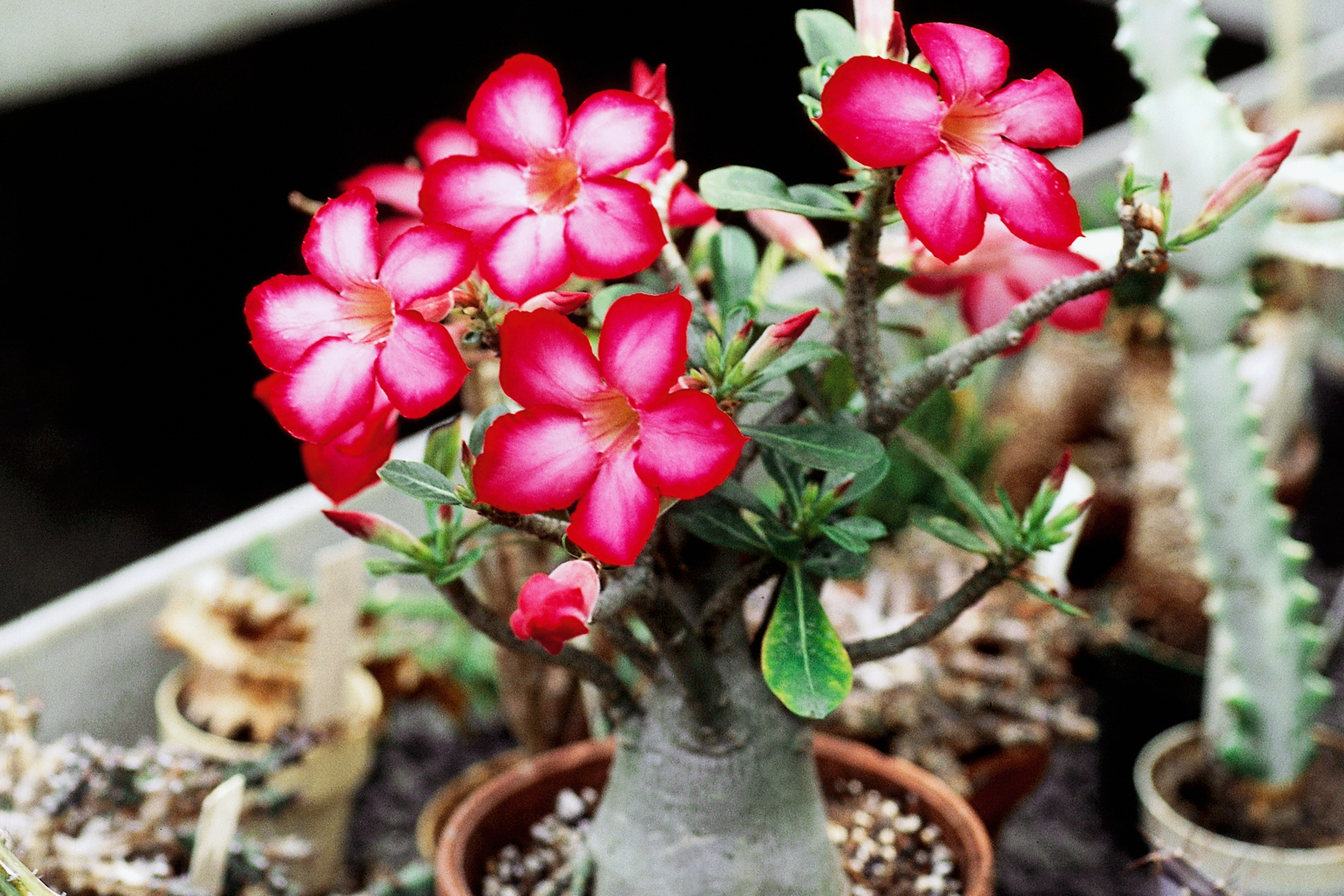
The desert rose is a beautiful plant with a swollen trunk, woody branches, tough green leaves, and tubular flowers that is native to Africa. The flowers range in color from red to pink and, depending on your gardening style, can be left to grow naturally up to 10 feet tall or pruned into a miniature tree. The desert rose is an excellent plant for beginners, since it is quite effortless to care for.
Based on its natural habitat being dry, the plant needs very little water to thrive. The plant does need plenty of warmth and sunlight, though, and it will drop its leaves if the temperature drops below 50 F. Placing this plant indoors close to a south-facing window should do the trick.
Purple Shamrock (Oxalis triangularis)
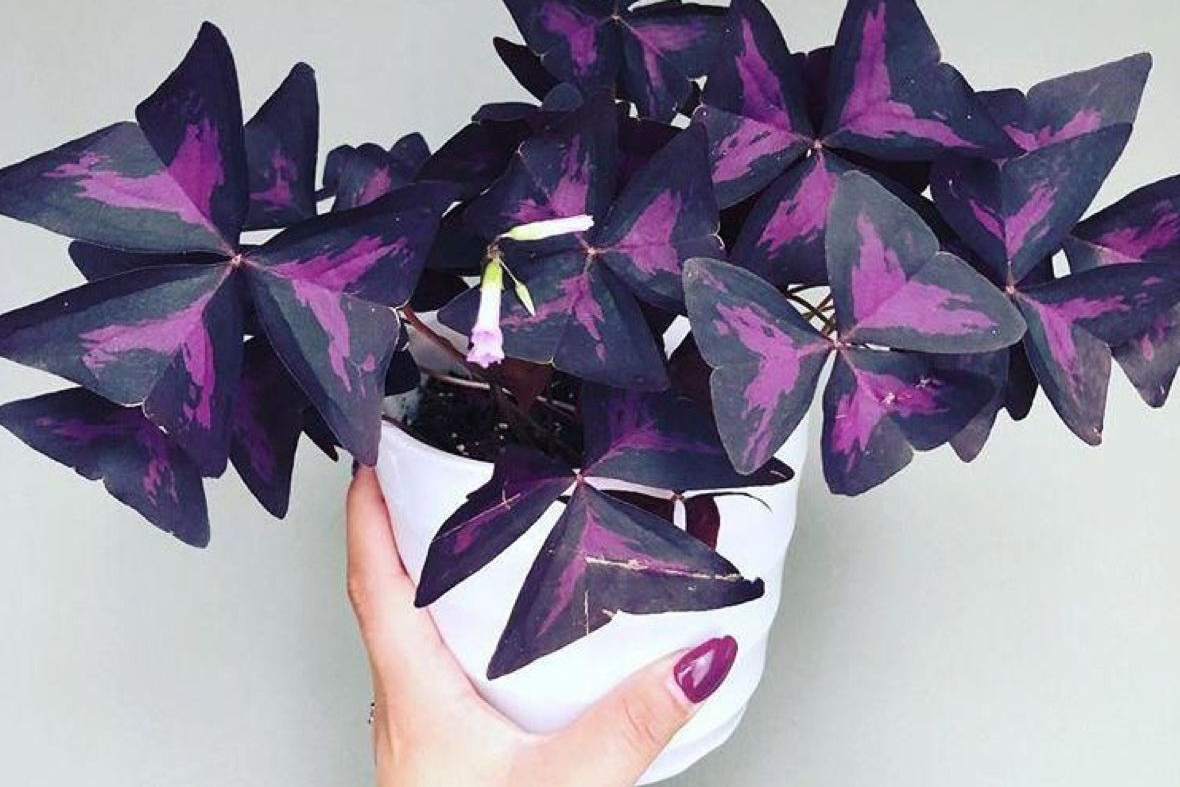
If you’re looking to add a bit of color to your selection of indoor plants, the purple shamrock is an excellent option. Its triangular leaflets bloom year-round and range in color from deep purple to magenta. The plant stems emerge from underground tubers that resemble small pine cones and is part of the wood sorrel family despite its name. Every day, the plant will move and turn itself toward the light in the morning and afternoon, and eventually close up its leaves at nightfall.
This plant is a good option for anyone who needs a plant for a cooler spot in their home; if the temperature is regularly above 80 F, the plant will become ragged and less vibrant. Though generally easy to take care of, the purple shamrock does prefer bright yet indirect light and is a fast grower, making consistent trimming necessary, so it doesn’t get out of control.

